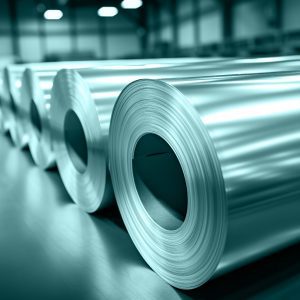Metal Recycling: A Sustainable Solution
Metal recycling is the process of converting waste metal into new metal products. It is an important environmental practice that helps to conserve natural resources, reduce pollution, and save energy. Metals are one of the most recycled materials in the world. In 2021, the global recycling rate for metals was over 50% and the total market was nearly 230 billion USD.
Environmental Impact of Virgin Metal Ores
Mining and processing virgin metal ores can have a significant environmental impact. It requires large amounts of energy and water, and produces greenhouse gases and other pollutants. Metal recycling is a much more environmentally friendly way to produce metal products. It requires less energy, water, and produces fewer pollutants. For example, one aluminum can save enough energy to run a TV for three hours!

Conserving Natural Resources through Recycling
Energy Efficiency in Metal Recycling
The Significant Role of Steel in Recycling
Aluminum: A Recycling Success Story

Aluminum, with its lightweight and corrosion-resistant properties, has a remarkable recycling story. Recycling aluminum saves a staggering 95% of the energy required for primary aluminum production. Recycling aluminum cans saves 95% of the energy required to make the same amount of aluminum from bauxite ore. This energy-efficient process is not only cost-effective but also significantly reduces greenhouse gas emissions. Aluminum enjoys high recycling rates, with over 75% of all aluminum ever produced still in use today. In the U.S. alone, over 50% of aluminum cans are recycled, making aluminum one of the most recycled consumer products.
The Rising Importance of Titanium Recycling
Challenges in Metal Recycling
Conclusion: Moving Toward a Greener Future
As we move toward a more sustainable future, it is crucial to support and embrace metal recycling efforts. From steel’s energy efficiency to aluminum’s incredible savings and titanium’s potential, recycling metals is a pivotal step in our journey to a greener, more sustainable world. However, the success of these efforts depends on a collective commitment to recycling, improving recycling infrastructure, and investing in innovative solutions. The next time you recycle that aluminum can or old steel appliance, know that you are making a positive impact on the environment and contributing to a more sustainable world for future generations.